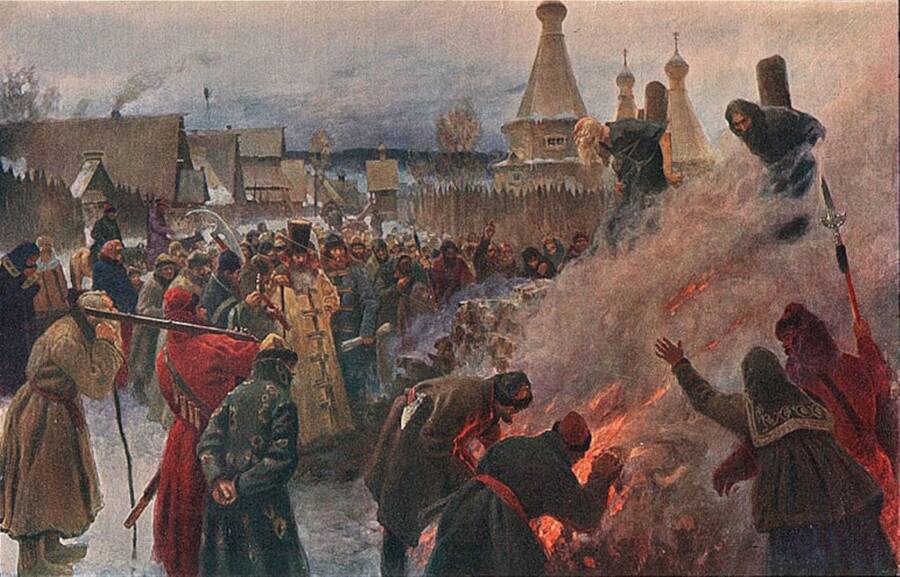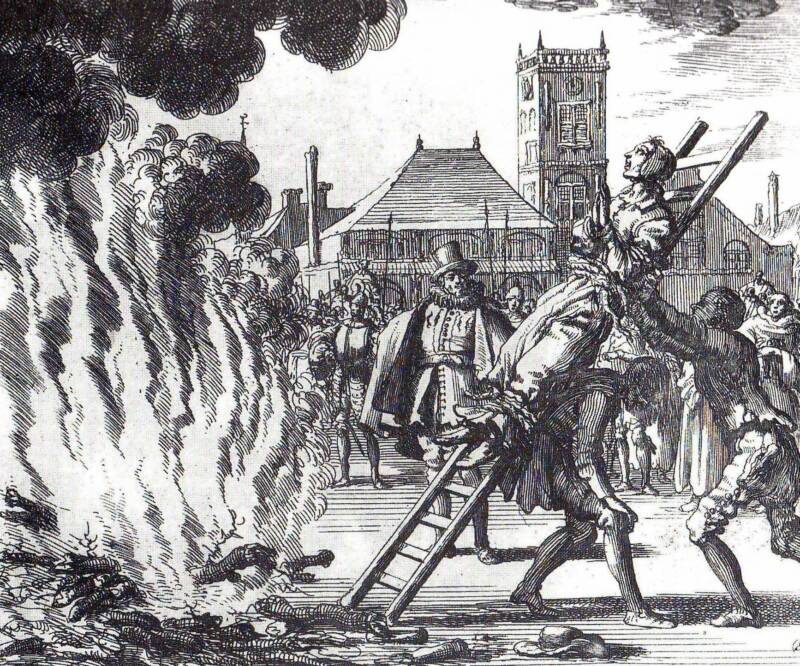Burning At The Stake

Wikimedia CommonsSome burnings were alleviated by tying gunpowder to the victim. That way, the inevitable explosion would kill the victim quicker.
Those in power during the Middle Ages generally attempted to match the severity of capital punishment with the associated crime.
Unfortunately, both sexism and superstition were alive and well in Medieval times. The ramifications of this deadly combination resulted in women being accused of witchcraft or heresy and subsequently burned at the stake.
Originally a Babylonian form of capital punishment, burning at the stake was later practiced in Europe during the Middle Ages. From Spanish heretics during the Inquisition to French martyrs like Joan of Arc, the practice of burning people to death became distressingly popular during this time.

Wikimedia Commons“Joan of Arc’s Death at the Stake.” By Hermann Stilke in 1843.
The punishment was simple: The accused would be bound to a stake and burned until their anguished screams finally ceased. But in some cases, those in charge would provide the victims with a semblance of mercy by attaching a container of gunpowder to the victim. This would explode when heated by the fire — killing the person much quicker.
Other mechanisms included placing the victim in a chain noose and killing them by hanging before the fire could do much damage.
Shockingly, many accusations of witchcraft during this time didn’t actually originate from an authority like the church. In those days, it was common that accusations of heresy or witchcraft came about due to petty rivalries in small towns. Frighteningly, mere finger-pointing could lead to someone being killed by fire — if the accusations were supported by others.

Wikimedia CommonsAn alleged witch being burned to death.
In England, burning people for heresy fell out of fashion in 1612 — but burning at the stake for other crimes continued well into the 18th century.
Ultimately, it appears that Medieval executions attempted to show how egregious a crime was — but instead ended up showing just how much bloodlust people have had throughout history.
We can take solace in the fact that most of the world has done away with Medieval execution methods by this point. Only time will tell if future generations will also do away with the more modern and “humane” ways of executing people that are still in use today.
After learning about the most incredibly cruel Medieval execution methods, read about the most painful medical procedures of Medieval times. Then, take a look at 15 gross Medieval foods that people actually ate.





